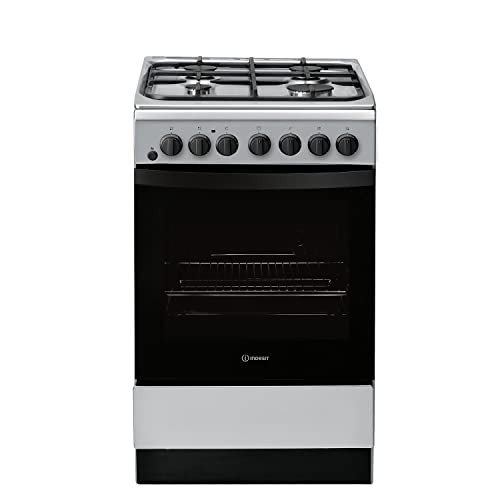The Essential Guide to Oven Hobs: Selecting the Right One for Your Kitchen
When it concerns home cooking, couple of home appliances are as essential as the oven hob. This flexible tool is vital for a range of cooking techniques-- boiling, frying, simmering, and sautéing. Given the myriad of alternatives readily available on the market, picking the ideal oven hob for one's kitchen can be intimidating. This short article aims to supply an in-depth take a look at oven hobs, discussing their types, functionalities, advantages, drawbacks, and essential factors to consider when buying one.
Understanding Oven Hobs
Oven hobs, frequently understood as cooktops, are flat cooking platforms that include burners or heating components. They can be integrated with an oven or stand-alone. The option of an oven hob can substantially impact cooking effectiveness and benefit.
Kinds Of Oven Hobs
Oven hobs are available in numerous types, each with unique functions. Below are the most typical types offered:
| Type | Description | Advantages | Drawbacks |
|---|---|---|---|
| Gas Hobs | Utilizes natural gas or lp | Instantaneous heat and exact temperature control; works well with all pots and pans | Needs a gas connection; less energy-efficient than electric |
| Electric Hobs | Usage electric coils or radiant heat | Easy to clean up; consistent heat distribution | Slower to warm up; can be less responsive than gas |
| Induction Hobs | Utilizes magnetic fields to heat cookware directly | Quick cooking; energy-efficient; easy to tidy | Requires compatible pots and pans; generally more costly |
| Ceramic Hobs | Flat glass-ceramic surface with convected heat | Visually pleasing; simple to tidy | Can be prone to scratching; slower to heat than induction |
Secret Features of Oven Hobs
When choosing an oven hob, several functions must be taken into consideration:
- Size & & Configuration: Available in numerous sizes, oven hobs can accommodate several pots and pans. Basic options are generally 30, 36, or 48 inches wide.
- Power Output: Look for hobs with differing power levels for different cooking procedures. High-powered burners are exceptional for boiling, while lower-power ones can be used for simmering.
- Control Types: Choose in between knob controls and touch controls. Ovens On Sales offer tactile feedback, while touch controls provide streamlined designs and extra functionalities.
- Security Features: Options like automated shut-off, kid locks, and flame failure gadgets are crucial for avoiding accidents.
- Alleviate of Cleaning: Choose models with smooth surface areas or detachable parts for easy upkeep.
Benefits and Disadvantages
Comprehending the pros and cons of different oven hobs can assist in making an informed choice.
Benefits
- Flexibility: Suitable for numerous cooking approaches, from boiling to frying.
- Speed: Many hobs heat rapidly, particularly induction models.
- Energy Efficiency: Some alternatives, like induction hobs, can lower energy intake compared to conventional methods.
Disadvantages
- Cost: High-end designs, particularly induction hobs, can be expensive.
- Installation: Gas hobs require professional setup and a gas supply, which might sustain additional costs.
- Compatibility: Not all pots and pans works on induction hobs, requiring additional purchases.
Purchasing Considerations
When picking an oven hob, consider the following elements:
- Cooking Style: Assess how often and what sort of cooking you do to determine the best hob type.
- Kitchen Layout: Measure your kitchen area to ensure the hob fits and matches other appliances.
- Spending plan: Determine how much you are prepared to spend. Aspect in installation and the expense of any needed pots and pans.
- Energy Source: Evaluate the schedule of gas or the electrical capacity of your kitchen to choose between gas and electric options.
FAQs About Oven Hobs
Q1: What is the difference in between a cooktop and an oven hob?A cooktop and an oven hob typically refer to the exact same appliance. Nevertheless,"cooktop "is a more comprehensive term that consists of both standalone hobs and integrated units with ovens. Q2: Can I use any pots and pans on an induction
hob?No, induction hobs require ferrous( magnetic)pots and pans
to work. Pots and pans made of product like stainless-steel or cast iron is appropriate, while aluminum and copper without magnetic homes are not. Q3: How do I tidy my oven hob properly?Cleaning techniques depend on the type of hob.
Generally, a damp fabric and mild cleaning agent work for glass-ceramic surfaces, while a specific hob cleaner is perfect for induction. Gas hobs need disassembling burners for comprehensive cleaning. Q4: Are induction hobs safe for cooking?Yes, induction hobs are usually safer than gas hobs as they do not produce an open flame,and the surface area cools down quickly. Many models also include child safety locks. Q5: How often ought to I change my oven hob?The life-span of an oven hob varies based upon the type and use. Generally, they last around 10 to 15 years.
Routine maintenance can help extend this duration. Choosing the perfect oven hob for your home can considerably boost your cooking experience. With a thorough understanding of the types, features, advantages, and considerations, anyone can make an educated option. From the high heat of gas to the performance of induction, there is a hob suited to every cooking need. Eventually, the best oven hob can transform cooking from an ordinary job into an art kind, making it possible for cooking enthusiasts to develop scrumptious meals with ease.

